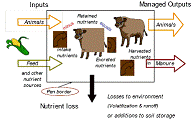Biological Systems Engineering, Department of

Department of Agricultural and Biological Systems Engineering: Presentations and White Papers
Date of this Version
11-2006
Document Type
Article
Abstract
Developing systems capable of controlled and efficient gene transfer is a fundamental goal of biotechnology, with applications including functional genomics, gene therapy, and tissue engineering. Substrate-mediated delivery, also termed solid phase delivery, describes the immobilization of DNA, complexed with nonviral vectors, to a biomaterial or substrate through specific or nonspecific interactions. Cells cultured on the substrate are exposed to elevated DNA concentrations within the local microenvironment, which enhances transfection. We investigated transfection resulting from DNA complexes immobilized to a substrate through specific interactions introduced through complementary functional groups on the vector and surface or through nonspecific interactions. Self-assembled monolayers (SAMs) of alkanethiols on gold were used to provide a controlled surface to investigate transfection following specific and non-specific immobilization. DNA, complexed with polyethylenimine (PEI), was immobilized to SAMs through nonspecific mechanisms or covalently linked to SAMs presenting appropriate functional groups through a fraction of the functional groups available on the PEI present in the complex. Nonspecific immobilization of DNA complexes and subsequent transfection was mediated by the hydrophilicity and ionization of the substrate, while covalent tethering resulted in immobilized quantities similar to nonspecific conditions, but provided no transfection. Subsequent studies incorporated polyethylene glycol (PEG)-terminated alkanethiols into the SAMs to reduce nonspecific complex adsorption. Covalent tethering of complexes to PEG/carboxylic acid monolayers resulted in statistically less complex immobilization and no transfection. Nonspecific immobilization to monolayers containing 40% PEG resulted in statistically less DNA complexes immobilized, but substantially greater transfection. Cell adhesion was not affected at this percentage of PEG. Similarly, the addition of Pluronic block copolymers (of polyethylene oxide and polypropylene oxide) to surfaces also enhanced transfection. We hypothesize that the presence of PEG in the monolayer may better preserve complex conformation upon binding to substrates, thereby enhancing the activity of substrate-mediated delivery of DNA complexes.


Comments
Podium presentation, American Institute of Chemical Engineers Annual Meeting, November 13, 2006, San Francisco, CA